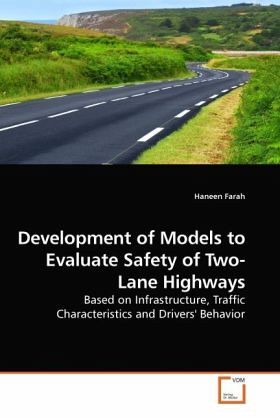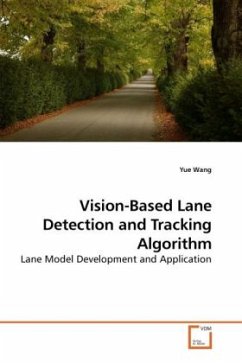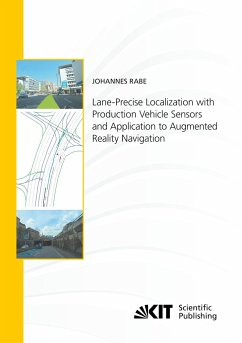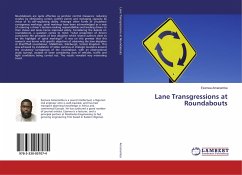
Development of Models to Evaluate Safety of Two-Lane Highways
Based on Infrastructure, Traffic Characteristics and Drivers' Behavior
Versandkostenfrei!
Versandfertig in 6-10 Tagen
52,99 €
inkl. MwSt.

PAYBACK Punkte
26 °P sammeln!
On two-lane roads, passing maneuvers are a complicated task that has important implications on traffic flow and safety. Two-lane rural highways constitute substantial percentage of the total roads length in Israel. On average about 20% of the fatal accidents on Israeli rural road sections are head-on accidents. This study investigates drivers' passing behavior and develops safety related models for two-lane rural highways. Several factors that affect passing behavior, such as the infrastructure, traffic and drivers' characteristics, were taken into account. Given the difficulty in collecting r...
On two-lane roads, passing maneuvers are a complicated task that has important implications on traffic flow and safety. Two-lane rural highways constitute substantial percentage of the total roads length in Israel. On average about 20% of the fatal accidents on Israeli rural road sections are head-on accidents. This study investigates drivers' passing behavior and develops safety related models for two-lane rural highways. Several factors that affect passing behavior, such as the infrastructure, traffic and drivers' characteristics, were taken into account. Given the difficulty in collecting real world data the approach of this study was to investigate passing behavior using an interactive driving simulator in a laboratory environment. Several scenarios which illustrate different rural two-lane road sections with different geometric and traffic conditions were examined. The methodology developed in this study was composed of: survey design and data collection, passing gap model formulation and estimation, and risk-taking model development. These models enhance the understanding of drivers passing behavior on two- lane highways.












